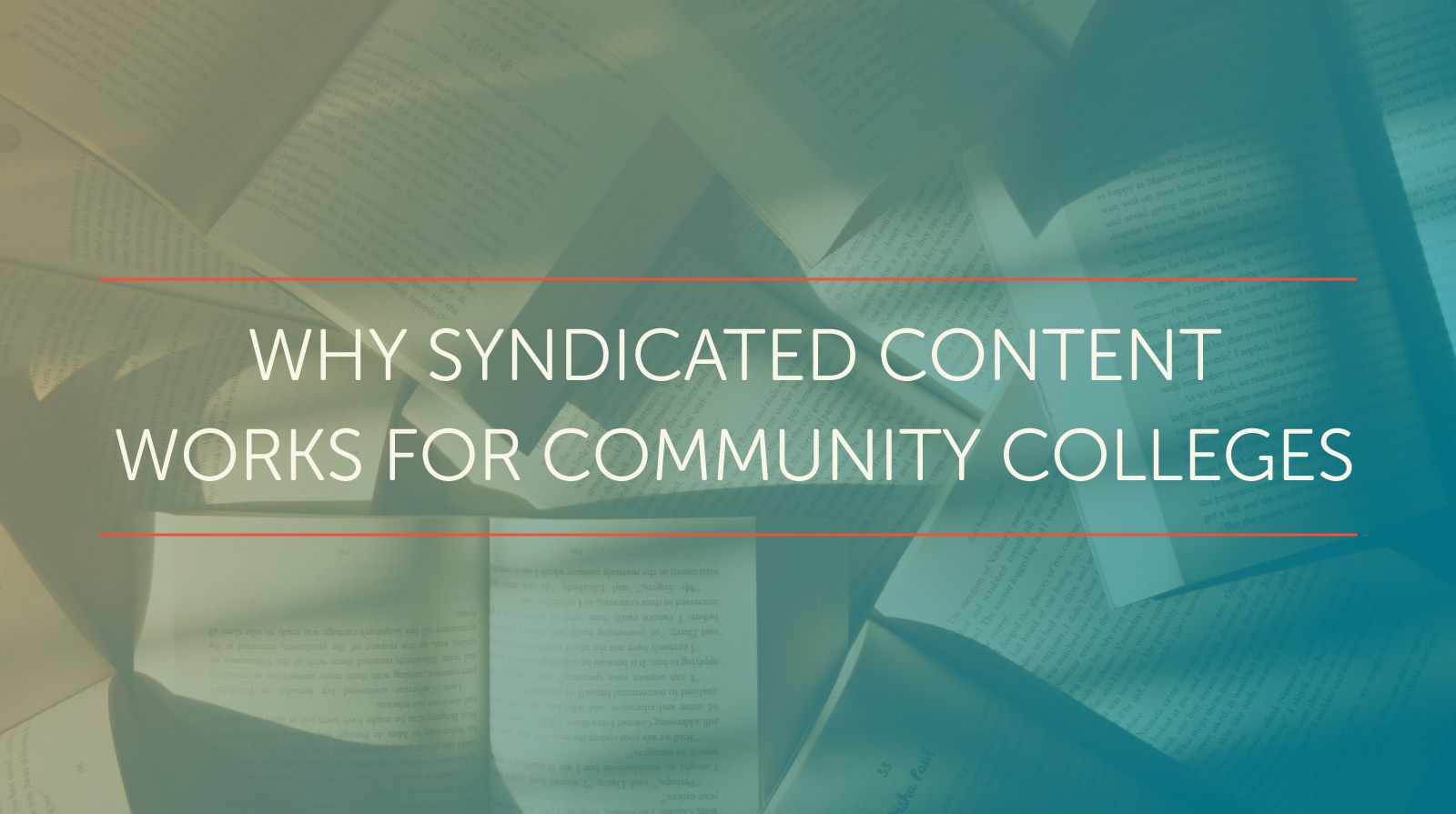Sharing content is a way for community colleges to split costs without competition.
The founding premise of content marketing is that, by sharing informative, entertaining, or inspirational articles, organizations can reach more potential customers and grow their revenue. For community colleges, content marketing helps them share the benefits of post-secondary education for a wide range of students—from those seeking a new career to those hoping to advance their current services, and even those who are merely curious.
However, for community colleges with short staff and a limited budget, writing well-researched content marketing articles can be a drain on their resources. While it may be an effective strategy, many have a hard time seeing the means toward pulling it off. The good news is that, through collaborative content sharing, they don’t have to go it alone.
In most industries, sharing content isn’t an effective content marketing strategy. After all, if you and your competitor are sharing the same articles, how can your customers tell you apart? But community colleges have an advantage in that they rarely compete with one another. In fact, they have a lot more to gain from sharing the marketing burden between them.
Still on the fence? Here are all the ways syndicated content can help community colleges improve their marketing.
1. It’s still customizable.
All our articles are researched and ready to go. But that doesn’t mean they couldn’t benefit from some custom treatment. When our users take extra time to add in details that are especially relevant to their location—or even just to tweak the prose to sound more like their community—it gives it a special touch that helps readers feel like the information is meant for them.
2. it creates a unified narrative.
Many community colleges struggle with the perception that they’re second-best to full-time universities. Pushing back against this negative stereotype takes a lot of resources, and most community colleges would rather focus their efforts on serving the needs of their students. However, when community colleges join forces to change the story that is told about them, everyone benefits. In the world of community colleges and content marketing, a rising tide lifts all boats.
3. Community colleges don’t compete with each other.
Except in extremely dense regions of the country, most community colleges don’t directly compete—at least, not in ways that are easy to determine. Students who attend community colleges usually make their choices based on a combination of proximity and course offerings.
Very rarely are two community colleges offering similar courses located close enough to each other to split the same body of potential students. Usually, the difference in commute is likely to be the deciding factor, or else one community college will offer a specialization that the other doesn’t. Either way, it’s unlikely that they’re drawing enrollment away from each other.
4. Marketing departments gain a wider reach.
No matter the size of the community college, their marketing departments have their work cut out for them. Large community colleges tend to have more team members, but also more responsibilities. And small community colleges have fewer resources to work with.
For many community college marketing departments, the prospect of a new campaign to manage can feel like a burden rather than a blessing. They need a tool that will expand their capabilities, rather than create another task to manage. Given that they only have so many hours in a day, each new marketing initiative needs to add significantly more to the overall effectiveness of their marketing program than it takes away in terms of missed opportunities.
This is what makes the type of syndicated content provided by CareerFocus such a grand slam for community colleges. They gain multichannel distribution through print, web, and social media, plus the value of high-quality, informative articles. By working with our content archive to assemble material for their target audience, they are able to reach a broader range of potential students faster and easier than if they had to do all the research themselves.
5. It’s cost effective.
Marketing programs are meant to accomplish any number of goals, from internal programs that support an HR initiative to PR pushes intended to shift public perception. All of these efforts have value, but it is harder to quantify their value, or to objectively determine their effect on enrollment numbers.
However, when it comes to content marketing, the impact of a program on enrollment numbers is much easier to trace. From improved community awareness to greater visibility online, content marketing reports some of the best ROI numbers of any initiative. And by using syndicated content, you can help your program reach father, and without taking away from your other marketing programs.
Syndicated content helps community colleges grow together.
Across the country, community colleges are serving similar goals. They all seek to help students achieve degrees and certifications in professions that will raise their employment prospects, improve their lives, and strengthen their communities.
As this is a mission shared by community colleges, it only makes sense that they make use of the same resources as well. By working together generate high-quality content marketing materials, we can help community colleges nationwide improve their enrollment rates and raise their communities. Contact us today if you would like to learn more about how our services can benefit your college.


